October 11, 2025
Bluegrass Open Sheep Dog Trials, 1980

Arthur Allen and his border collie Cap headed for a shady spot to cool off after competing in the Bluegrass Open Sheep Dog Trials at Walnut Hall Farm June 15, 1980. Sixty-seven dogs, 400 sheep and 1,000 spectators gathered for the 21st annual event. This year’s competition, now known as the Bluegrass Classic Stockdog Trial is being held through Sunday at Masterson Station Park. This marks 57 years the trails have been held in the Bluegrass and is considered the longest-running. largest and most prestigious trial in the country. Photo by Ron Garrison | Staff
North Broadway and I-64 & I-75 interchange, 1970
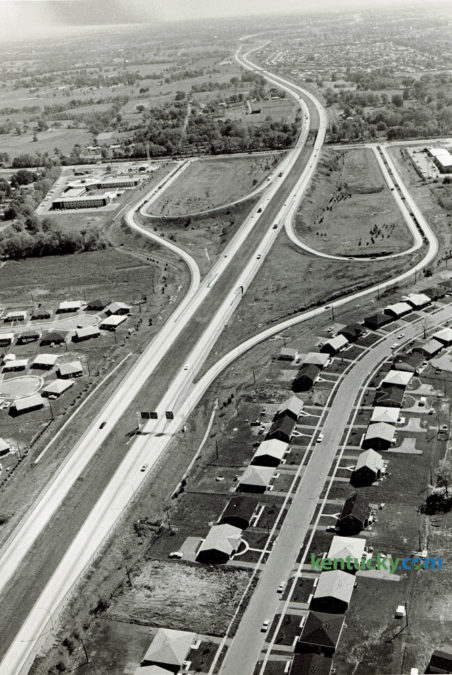
Aerial view of the I-75 and I-64 interchange at North Broadway in October 1970. The interchange was controversial when it opened due to several fatal accidents which occurred when drivers attempted to access the interstate from North Broadway by the highway’s off-ramps, resulting in head-on collisions. As of early October 7 fatalities had occured in the previous four months. The state highway department made several changes in the interchange after meeting with a delegation of Fayette County officials. Interstates I-75 and I-64 intersected in this 8-mile stretch north of Lexington and was completed in the fall of 1970. Photo by John C. Wyatt | Staff
First neighborhood movie theater, 1949
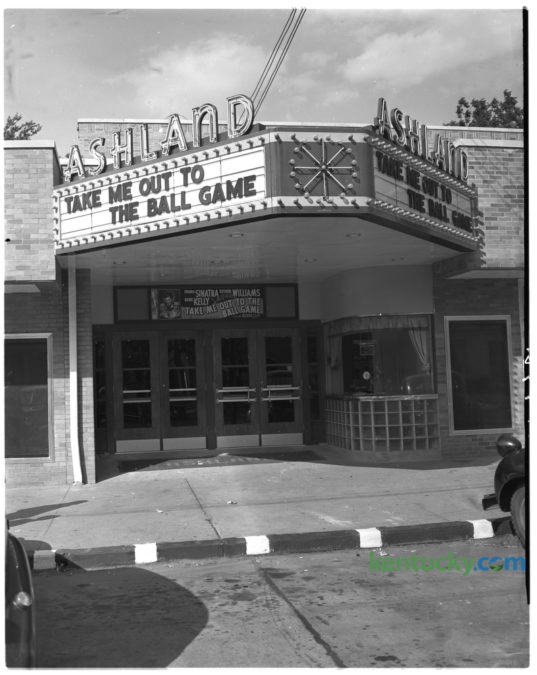
The Ashland, Lexington’s first neighborhood theater had it’s formal opening June 8, 1949. The theater, at 815 Euclid Avenue in Chevy Chase, was billed as being fireproof and air-conditioned. It had 600 seats and featured an all female staff, ushers, ticket takers and cashiers, when it opened. Joseph Neiser was the manager and was operated by the Greater Lexington Theaters, Inc., an affiliate of the Midstates Theaters, Inc., of Cincinnati. Midstates converted the theater into a twin cinema in October 1981. It closed in 1985. In 1986 the former theater opened as the posh supper club Bugatti’s. It closed in less than a year and reopened in 1988 as Streamers, a dance club. Then came J.D.’s which was followed by the Blue Moon Oldies Saloon which opened in 1992, also known as the Blue Moon Saloon. It was followed by The Art Bar and in 2016 the structure was razed to make way for the Bear & The Butcher restaurant and Bar. Herald-Leader Archive Photo
Pepper Distillery warehouse demolition, 1981
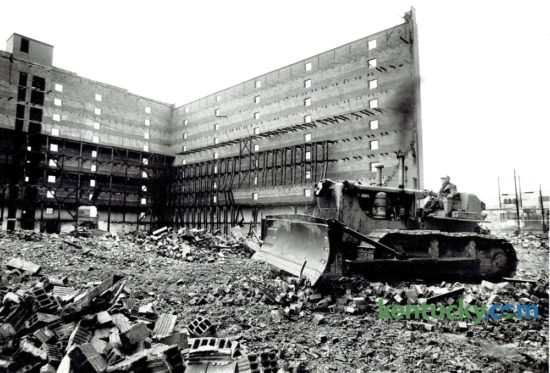
A worker using a bulldozer cleared debris at the Pepper distillery on Manchester Street on December 23, 1981 after two wall were blown down the previous day. The building was in the process of being razed when a gust of wind knocked down the walls of one of the buildings in the old James E. Pepper distillery complex. The five-story, 22,000 square-foot building formerly stored whiskey barrels and has not been used since the distillery was closed in 1971. Photo by Ron Garrison | Staff
Fishing at Lake Ellerslie, 1949
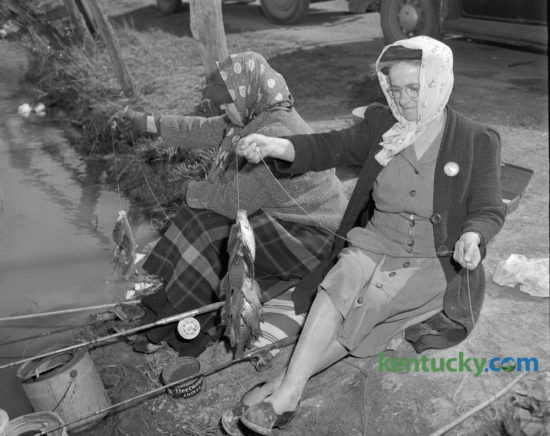
Lake Ellerslie fishing club members Susie Perkins and Mae Alexander displayed strings of fish they caught at the lake, which is owned by the Lexington Water Company, on Richmond Road in April 1949. Herald-Leader Archive Photo
Henry Clay relay team, 1982
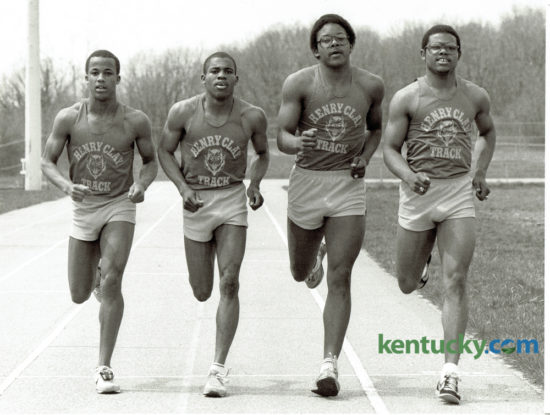
Henry Clay High School’s boys relay team was featured in a city high school track preview in April 1982. Shown here are, from left, Allen Franklin, Ron Chestnut, Chris Chenault and Phil Chenault. The Class 3A, 6th Region track meet will be held today at Henry. Photo by John C. Wyatt | Staff
Paris Pike, 1989
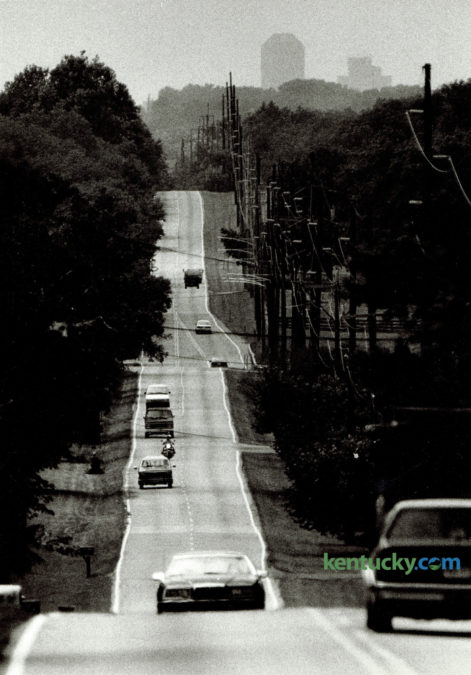
A view of Paris Pike just inside the Fayette County line looking toward Lexington in August 1989. At the time Gov. Wallace Wilkinson had pledged to widen the road from two lanes to four lanes, prompting strong debate on both sides of the issue. The proposal pitted horse farm owners, environmentalists and historic preservationists against motorists, developers and the families of the road’s accident victims. Traffic accidents on the 14-stetch of road between Lexington and Paris, had killed at least 44 people in the previous 30 years. It wasn’t until 1997 that the widening project began and was completed in 2003. Photo by Ron Garrison | Staff
Central Park, 1984
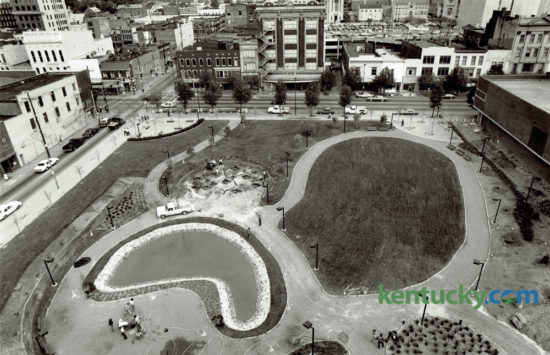
What is now Phoenix Park at the corner of Main Street and Limestone, was originally called Central Park, seen here in October 1984. It was built on the former site of the Phoenix Hotel, which was demolished in 1981. The Lexington Public Library would later be built just to the right of the park, opening it’s doors in April 1989. The Robert F. Stephens Courthouse Plaza and Fayette Circuit and District court houses now occupy the block just north of Main Street. Photo by Tom Woods II | Staff
Bluegrass-Aspendale housing project, 2005
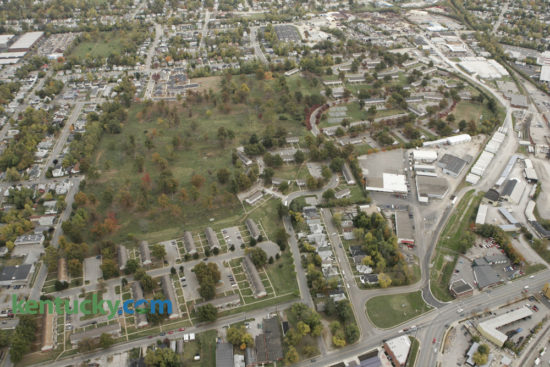
Aerial view of the Bluegrass-Aspendale public housing project on the east side of Lexington in October 2005. The intersection of Midland Ave., East Third and Winchester Roads is at the bottom right of the photo. The development was built in stages between 1936 and 1951 and was Lexington’s first venture into public housing. It was segregated initially and wasn’t until 1974 that a 300 yard fence was torn down. The complex had 963 units at it’s peak and around 1990 the Lexington Housing Authority began to thin out the neighborhood by demolishing 295 units. In October 2005 they received a federal grant to demolish the remainder of the structures, which can be seen in this photograph. The site was then redeveloped with single family homes and apartments and the addition of William Wells Brown elementary school. David Stephenson | Staff
Tobacco warehouse demolition, 1994
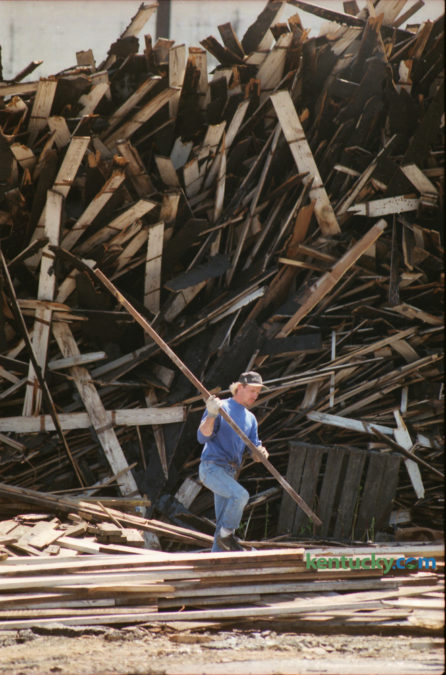
Brad Brierly separated salvageable boards from scrap during demolition of Farmers Pride Tobacco Warehouse on Simpson Avenue April 19, 1994. The warehouse was being torn down to make way for Campus Downs Condominiums. Photo by David Perry | Staff



